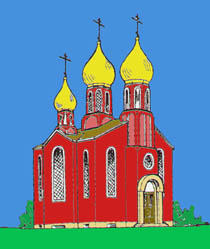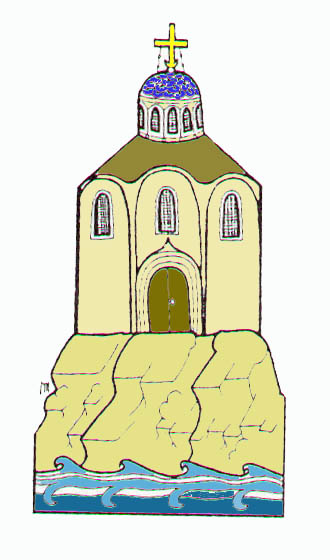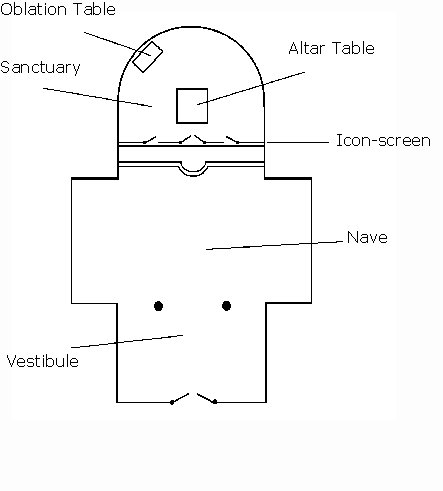Church Building

In the long history of the Orthodox Church a definite style of church architecture has developed. This style is characterized by the attempt to reveal the fundamental experience of Orthodox Christianity: God is with us.
The fact that Christ the Immanuel (which translated means “God with us”) has come, determines the form of the Orthodox church building. God is with man in Christ through the Holy Spirit. The dwelling place of God is with man. “The Most High does not dwell in houses made with hands,” says Saint Stephen quoting the Old Testament prophets. Saint Paul says that men are the temples of God:
“Christ Jesus himself [is] the cornerstone, in Whom the whole structure is joined together and grows into a holy temple in the Lord; in Whom you also are built into it for a dwelling place of God in the Spirit” (Eph 2.21–22).
The words of Saint Peter are very much the same.
“Come to him [Christ] to that living stone . . . and like living stones be yourselves built into a spiritual house . . . to offer spiritual sacrifices acceptable to God through Jesus Christ” (1 Pet 2.4–5).
“We are the temple of the living God . . .” (2 Cor 6.16). And it is exactly this conviction and experience that Orthodox Church architecture wishes to convey.

Orthodox Church architecture reveals that God is with men, dwelling in them and living in them through Christ and the Spirit. It does so by using the dome or the vaulted ceiling to crown the Christian church building, the house of the Church which is the People of God. Unlike the pointed arches which point to God far up in the heavens, the dome or the spacious all-embracing ceiling gives the impression that in the Kingdom of God, and in the Church, Christ “unites all things in himself, things in heaven and things on earth,” (Eph 1.10) and that in Him we are all “filled with all the fullness of God” (Eph 3.19).
The interior of the Orthodox Church building is particularly styled to give the experience of the unity of all things in God. It is not constructed to reproduce the upper room of the Last Supper, nor to be simply a meeting hall for men whose life exists solely within the bounds of this earth. The church building is patterned after the image of God’s Kingdom in the Book of Revelation. Before us is the altar table on which Christ is enthroned, both as the Word of God in the Gospels and as the Lamb of God in the eucharistic sacrifice. Around the table are the angels and saints, the servants of the Word and the Lamb who glorify him—and through him, God the Father—in the perpetual adoration inspired by the Holy Spirit. The faithful Christians on earth who already belong to that holy assembly “. . . fellow citizens with the saints and members of the household of God . . .” (Eph 2.19) enter into the eternal worship of God’s Kingdom in the Church. Thus, in Orthodox practice the vestibule symbolizes this world. The nave is the place of the Church understood as the assembly and people of God. The altar area, called the sanctuary or the holy place, stands for the Kingdom of God.

